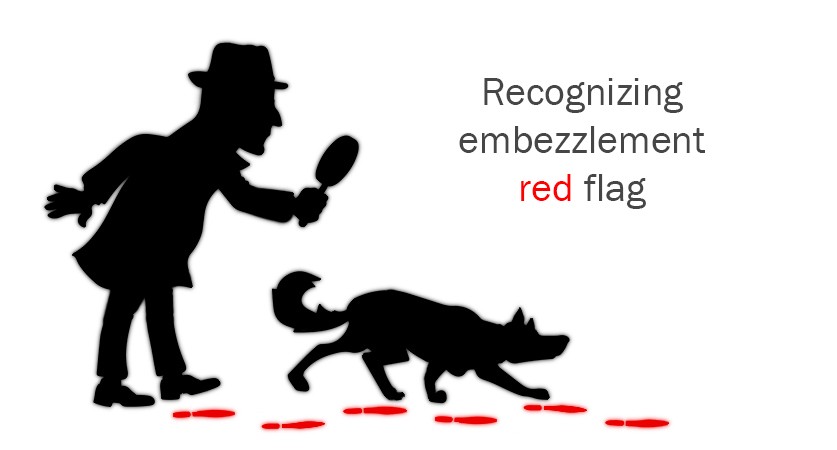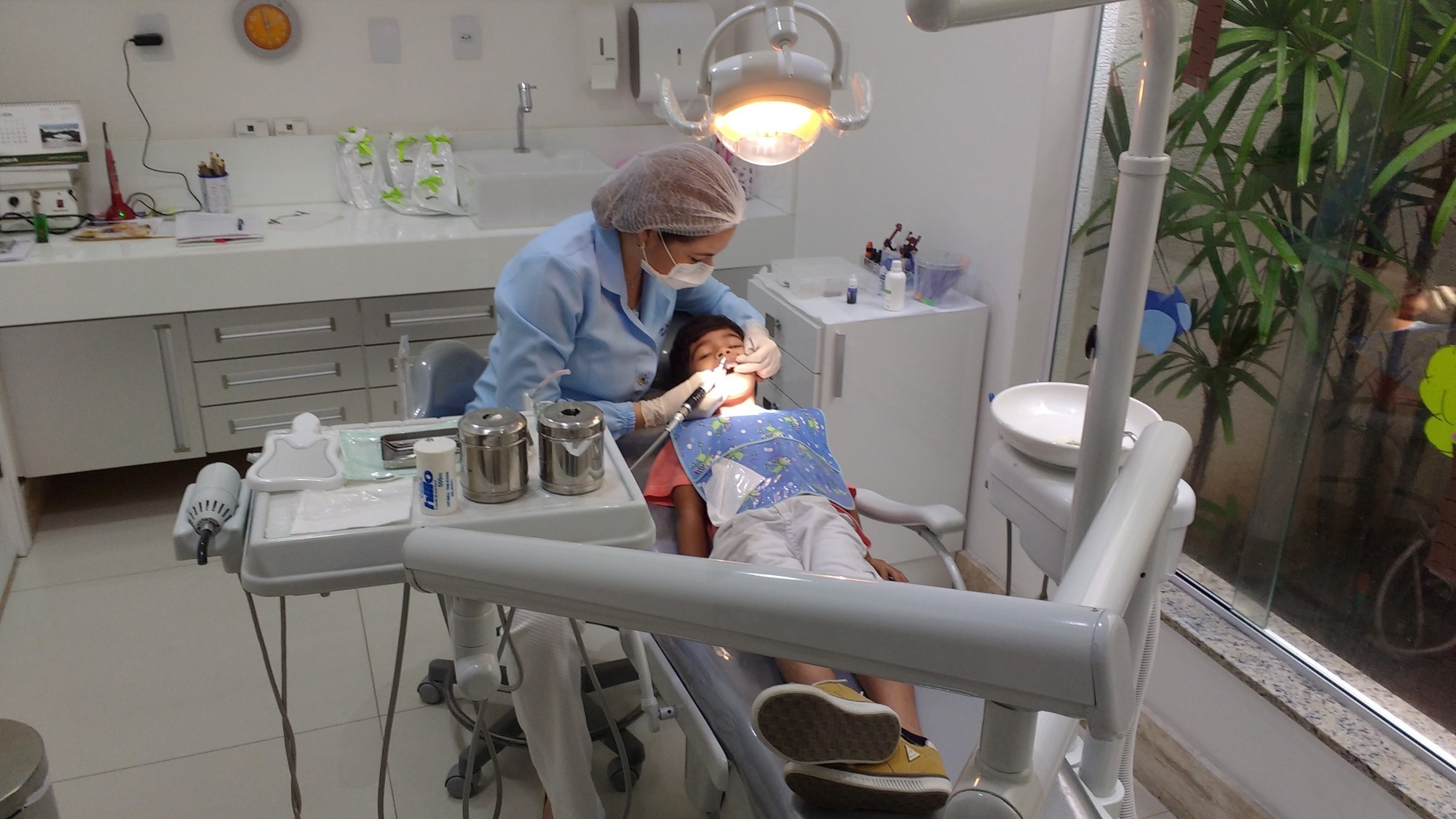PART 1 – Recognizing Embezzlement Red Flags
You practice dentistry because you enjoy helping patients. At the same time, you went into business to make a profit. What happens when you discover that a trusted employee is stealing your profits?
Think it cannot happen to you? Think again…no one is immune! In this article you will learn to recognize the profiles and modus operandi of embezzlers, safeguards you can implement to protect your practice from being an easy target, as well as what to do if you discover that you are a victim of embezzlement.
WHAT DOES EMBEZZLEMENT COST?
While the monetary cost speaks for itself, even more devastating are the emotional and physical costs. Destroyed trust, time spent in discovery and recovery, legal fees, bad press, shattered relationships, a damaged reputation, lost patients and revenue wreak havoc in the victim’s life. The stress of dealing with all aspects of embezzlement has been shown to create health and emotional issues, simply because the broken trust led to a broken heart. The experience is gut-wrenching and emotionally heart-breaking.
EMBEZZLEMENT? IT WILL NOT HAPPEN TO ME!
You have invested a substantial amount of time and money in equipment and operations, and are responsible for the essential policies and procedures necessary to operate and control a viable business. Unfortunately, your caring and trusting personality, which is a necessity for being a good practitioner, as well as the lack of business training received during dental school, internship and residency programs does not properly prepare you to handle all the associated business tasks of the job. These factors place you and your practice at a much greater risk to experience embezzlement at some point during the life of the practice. Fraud and embezzlement in healthcare practices are increasing at an alarming rate.
WHY ARE HEALTHCARE PRACTICES PARTICULARLY SUSCEPTIBLE TO EMBEZZLEMENT?
The average practice is comprised of a close-knit group of people. The majority of these team members come to know each other and the dentists quite well. This familiarity many times leads to a lack of instituting strict business principles, policies, procedures, and controls. This lack of control, mixed with the daily flow of cash and checks, and a lack of supervision, sets the practice up as an open account for a potential embezzler.
WHO EMBEZZLES?
Anyone who is a direct employee or an extension of your practice is a suspect for embezzlement. As you review your practice and employees, you never want to believe that the people whom you trust and rely on would ever betray you. Beware! Embezzlers come from all walks of life, from the lowest to the highest-paid employees, including some who might surprise you! Reported instances of embezzlement include:
Employees taking cash payments
Office managers taking patient checks
Office managers paying personal bills
Spouses and family members taking from other family members
CPAs diverting funds
Even the dentist stealing from the practice!
In most cases, the embezzler has gained the trust and confidence of the person or practice being defrauded. Your high level of trust and confidence enables that employee not only to commit, but also to continue to steal and conceal the theft. Yes, theft! You have been robbed! Instead of being held up at gunpoint, the embezzler has used deception and schmoozing to commit the crime.
Most often, an embezzler’s intent is to “borrow” a small amount of money and re-pay it soon afterward. Unfortunately, the “borrowed” money is rarely returned. In fact, the employee continues to “borrow” from the practice. Once the crime is committed and continues to be undetected, the employee eventually increases embezzlement activities and the amounts taken. The employee becomes more confident that the missing funds will remain undetected. Subsequently, greed takes over.
Next, the employee assumes an attitude of entitlement. Many times the employee feels the dentist makes too much money and “ owes” the employee. The employee truly believes that the office would not be able to function without him/her. The embezzler also believes that he/she is responsible for the dentist’s high income being created in the practice. As the embezzlement continues, the employee becomes more and more dependent upon “the extra income”. Most embezzlers spend the money on increasing their lifestyle or for gambling and/or drugs. Over time, the embezzler’s over-confidence gives way to carelessness at concealing the theft, which eventually leads to detection of the crime.
WHAT ARE THE RED FLAGS?
Employers must be aware of certain behaviors indicative of an embezzler’s profile. This awareness can minimize your risk. Warning signs include:
The Overly Loyal Employee: Be vigilant to employees who always appear to be going beyond the call of duty. Their behaviors typically include:
Arriving to work early and/or staying late on a regular basis.
Constantly working overtime, taking work home, seldom being absent.
Refusing or declining to take scheduled vacations (or may take only a day or two off when the dentist is out of the office.)
Taking accounting work home.
Stirring dissension in the office. The embezzler may bad-mouth the dentist for paying low wages or bonuses or complain about other staff members being incompetent. Be wary of employees who stir up drama, bad feelings or negativity in the practice by routinely complaining about their co-workers or their boss.
Employee Lifestyle Change: Be cognizant when an employee’s lifestyle changes from that of a struggling employee to one who suddenly seems to be enjoying a higher standard of living. The employee may be experiencing:
A deteriorating financial condition, including that of his/her spouse becoming unemployed, etc.
Emotional stress about family or personal financial problems, including a separation or divorce.
Involvement with a spouse, significant other, or close family member who is an alcoholic, drug addict, or gambler. Each of these issues creates severe financial pressures and burdens for the employee.
Resentment of the dentist’s income or lifestyle.
Bothered by the level of fees charged.
A sudden change in spending habits. (Has the employee acquired a new car, house, boat, clothing, or jewelry?)
The All-Controlling…Always-Has-An-Excuse Employee: This employee wants full control over all financial aspects of the practice. When something falls through the cracks or does not get completed, he/she always has an excuse. This employee tries to convince the dentist that outsourced professional assistance with a CPA or consultant is an unnecessary expense. Behaviors typical of this scenario include:
Insisting on handling all office financial responsibilities by him/herself.
Forgetting to “follow procedures” or has “no time” to post books.
Not adhering to standard office procedure or protocols.
Offering excuses for not getting the days activities posted or completing the daily close.
Maintaining sloppy records that contain erasures, jumbled or illegible data, entries, etc.
Showing open resentment at any oversight or supervision of his/her work.
Becoming angry or resentful when any new financial controls are implemented.
Resisting any changes in the office accounting system. This usually surfaces and is met with rebuttal when the change involves the upgrade or replacement of an outdated system with a newer, easier, more efficient one.
Not reconciling bank statements with the checkbook register accurately.
Blaming discrepancies on the computer or software program.
In addition to specific behavioral actions by employees, changes in other practice financial activities can be a flashing warning signal:
You receive multiple patient complaints regarding discrepancies in their bills.
Without apparent explanation, your accounts receivable increases.
Conversely, without apparent reason, your collection ratio decreases.
You are asked to regularly write checks to a new supplier whom you have never met.
Office supplies and dental inventories seem to be used at an increased rate when the patient census or flow has not proportionately increased.
The employee is ambitious and enthusiastic about collecting on overdue accounts, may employ high-pressure telephone solicitation techniques, yet the results are not fruitful.
You are paying more overtime than usual to the staff, but the work is still not current.
A former employer gives the employee a negative reference.
Not reconciling bank statements with the checkbook register accurately.
An employee who handles financial affairs suddenly quits or disappears without notice or explanation.
WHAT IS AN EMBEZZLER’S MODUS OPERANDI?
Embezzlement methods range from “forgetting” to pay back the petty cash box to very elaborate schemes that cover-up significant monetary theft. Below are some of the more commonly reported tactics:
The employee takes a cash payment from a patient and does not post the charge or payment.
The employee takes a cash payment, pockets the funds, then posts a “write-off” to the charge. Similarly, the employee may code the write-off as a “discount”.
The employee gives a patient a falsified receipt for a payment that was made.
The employee steals patient statements so patients who paid cash (which got pocketed) do not get a bill showing an outstanding balance.
Falsifying expenses and expense accounts.
The employee gives a busy dentist a stack of checks to sign and includes an extra one. The extra one can be a duplicate payment for which the embezzler will attain and pocket the refund. Alternatively, it may be made out to a bogus supplier and deposited in the embezzler’s account. Some embezzlers have brazenly made the checks out to themselves!
The employee issues a refund check made out to a fictitious patient. (The employee created a bogus account under that name.)
The employee substitutes an insurance check payment for cash taken and does not post the insurance payment.
The office uses a rubber stamp with the dentist’s signature, making it easier for the employee to make a check (or paycheck in some cases) out to him/herself.
The employee submits insurance claims for fictitious payments or treatment and then pockets the payment on the claim.
The employee alters the payroll by doubling or tripling the FICA withholding on several employees’ checks, or does not pay FICA at all and pockets this amount. (The dentist most likely will be held liable for the unpaid FICA, including penalties, regardless of the fact that he was unaware of it.)
The employee crashes the office computer system and installs a new system. The employee then sets him/herself up as the system’s administrator. This gives that employee total control over all entries. In addition, this employee may cleverly disengage the audit trail function.









